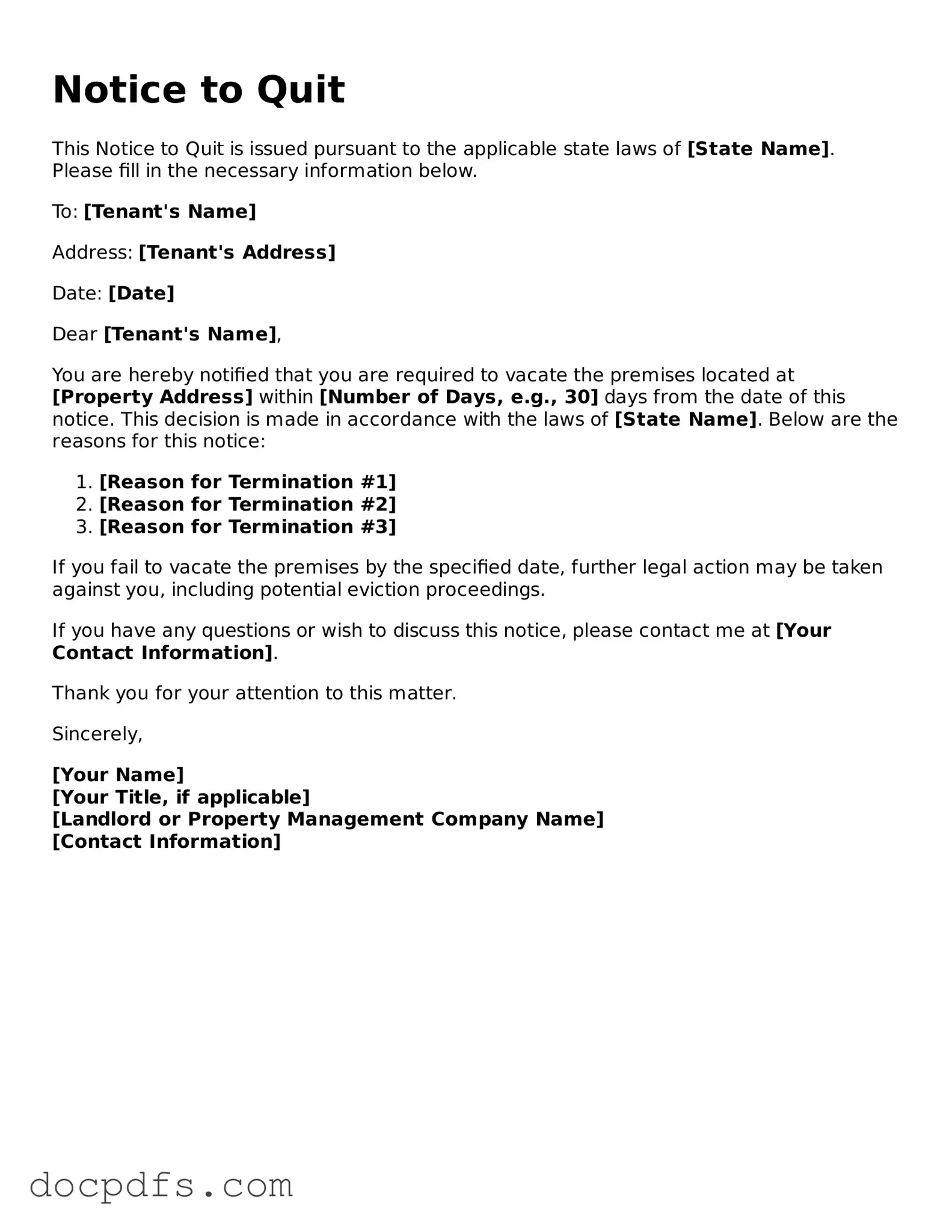The Notice to Quit form is a critical document in the landlord-tenant relationship, serving as a formal communication tool when a landlord seeks to terminate a lease agreement. This form outlines the reason for termination, whether due to non-payment of rent, lease violations, or other grounds permitted by law. It typically includes essential details such as the tenant's name, the property address, and the specific date by which the tenant must vacate the premises. The form must adhere to state-specific regulations, which dictate the notice period required and the manner in which it must be delivered. Understanding the nuances of this form is vital for both landlords and tenants, as it sets the stage for potential eviction proceedings if the tenant fails to comply. Properly completing and serving a Notice to Quit can help landlords avoid legal pitfalls and ensure a smoother transition when reclaiming their property.
